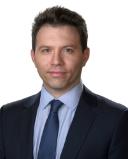Leadership
How to Win the Money and People Game in Business
A 6-step playbook for creating a people-first organization.
Posted June 6, 2022 Reviewed by Devon Frye

In the words of Robert Hogan, “The key to success in business is money and people.” Money concerns decisions about strategy and finance, which are spearheaded by the CEO and CFO. Conversely, the people side concerns talent decisions and influencing cooperation, which fall under the purview of the CHRO.
The people side has played second fiddle for over 200 years. Consider the Industrial Revolution: No one was talking about employee engagement, morale, psychological safety, and so on. They were talking about new innovations, such as the steam engine, electric motors, and the spinning jenny, and they were myopically intent on using people to make money.
But the people side is vastly consequential for moral and economic reasons.
First, giving people meaning, purpose, and passion is the right thing to do. The alternative is bad leadership and toxic cultures that oppress people, who might even bring stress home to their families and create dysfunction.
Second, from an economic perspective, executing on strategy is almost exclusively psychological (e.g., inspiring cooperation, fostering engagement, facilitating healthy team dynamics). What’s more, while the money side requires good judgment, it too is very dependent on the nature of human nature—a truth that is often forgotten by executives.
Kodak, for instance, made a monumental strategic blunder when they ignored the digital camera revolution. Why? Because their CEO, Kay Whitmore, projected his traditional values on the organization, doubling down on film instead of pursuing digital cameras. Did he have a high IQ and spend his entire life in the industry? Yes. Did he interpret data through the filter of his own psychology? Yes.
So, the question is: What is the playbook for creating a people-first organization that balances money and people?
Create a C-4 Alliance
People-first organizations have an aligned C-suite. Organizations need their CEO, CFO, and CHRO working together to identify successors for critical leadership roles. This group represents money and people, rather than strategy and finance being alienated from talent.
What I’m arguing is this: If you concentrate on strategy and finance, and cast talent conversations to the side, you’re going to lose. If you’re a CEO that mostly interfaces with the CFO, and then talks about talent and culture intermittently, you’re going to lose. You wouldn’t have lost in the 1800s, and you wouldn’t have lost in the 1990s, but you’ll lose in 2022 and beyond.
It’s worth noting that it’s a C-4, not a C-3, because it’s imperative to include incumbents in talent conversations. It’s almost universally true that incumbents have a hard time passing the baton. Or, at the very least, they want to choose a successor like them—same personality, same values—and have unrealistic expectations for the person coming after them. As part of the C-4 team, they get a boost of objectivity that reframes their role as coach and mentor, as well as makes them feel important and valued (because they are).
Create a Vision and Values
Leadership doesn’t matter much in North Korea, because no one can leave. Today, followers in many parts of the world have power as societies become diverse, fair, and inclusive—hence The Great Resignation. This means influencing cooperation is not the carrot-and-stick approach but instead a meaning and purpose game. Meaning and purpose are intrinsic and powerful, whereas positional authority is external, weak, and unsustainable.
Consequently, the best organizations have a powerful vision, clear values, and a strong culture. They stand for something, and their people go to work with passion and purpose (not a paycheck). Vision and values create a common purpose and language, creating a shared reality and satisfying the human need for meaning. Meaning is the glue of cooperation in the coming years—not hierarchy, not a paycheck, not dictators, not rules with rewards and punishments.
Identify Core Athletes
The Pareto principle says 80 percent of productivity comes from 20 percent of the people. These folks are referred to as high-potentials; their knowledge, skills, traits, and motivation are in line with ascending to executive leadership.
Given decentralization, and a hierarchy-less future, I recommend identifying and segmenting leaders into a general talent pool that can be drawn on to meet an ever-changing, agile strategy. Who are the top 20 percent? Who are the top 5 percent?
Use Success Profiles for Critical Roles
Leadership is universal and relative. First, there are universal attributes that correlate with effective leadership. For instance, integrity matters regardless of business context. Lying, cheating, and stealing theoretically disqualify you from leadership in any culture around the world.
At the same time, leadership is relative to an organization’s strategy and culture. Leading in biotech looks different than investment banking. Leading in finance looks different than leading a marketing organization.
But it’s impossible to analyze every leadership role in an organization, so we need to pay special attention to critical roles. These roles are prioritized based on organizational strategy and leadership level. Then, after identifying critical roles, it's possible to outline experience requirements and the leadership style that matches role objectives, thus becoming crystal clear on how to evaluate people for the position.
Objective Assessment
Intuition is arguably the worst way to evaluate talent. We are pre-programmed to follow tall, charismatic charlatans instead of people who have what it takes to lead us into the future. This is because the mind evolved in the context of strict hierarchies, and this form of social organization—kingdoms, chiefdoms, and dictatorships—was effective under a commanding dictator. Consider modern-day examples of command-and-control leadership: Mussolini, Stalin, Putin, Mao Zedong, Genghis Khan, and Shaka Zulu.
Thus, when we use our intuition, our successor pool tends to get filled with charismatic extraverts with hard-charging personalities who may or may not be good at leadership. Alternatively, I recommend fleshing out your plan for decentralization, since complexity theory suggests flattening organizational hierarchies, and using objective assessments to identify leaders that can take your organization into the future.
Accelerating Development
The C-4 alliance decides the top successors—or a single successor—for a position, and then crafts development journeys. Development journeys should include (a) needed experience and (b) the psychology of leadership. Needed experience is straightforward: What does this person need to do before moving to the next level? Do they need to manage a larger, more complex P&L? Or have a short stint in investor relations before becoming CFO?
On the other hand, the psychological side of leadership concerns leading people. Is this leader overconfident and therefore impervious to feedback from their team? Do they struggle with holding others accountable? Are their signature strengths taken too far? Objective assessment identifies these areas and allows them to be developed over time via coaching and other development activities.
In conclusion, the story of business is the story of money and people. However, ever since the Industrial Revolution, money has taken center stage at the exclusion of people, causing a lot of psychological harm and low productivity. Karl Marx was right about unbridled capitalism: Money without people is alienating and, ironically, less productive.
The future looks much different as humanity evolves and re-organizes from hierarchy to decentralized power, where people have high standards for leadership and expect meaning and purpose at work. No one is a captive audience, leadership is not command-and-control, no one is oppressed, and therefore creating a people-first organization matters more than ever. These six steps will help you get there.
References
Charan, R., Barton, D., & Carey, D. (2018). Talent wins: The new playbook for putting people first. Harvard Business Press.
Hogan, R. (2005). In defense of personality measurement: New wine for old whiners. Human Performance, 18(4), 331-341.




